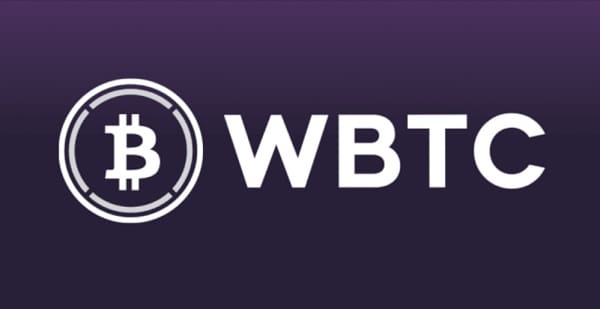Table of Contents
The cryptocurrency landscape buzzes with innovations that seek to close gaps between disconnected blockchains and improve the usability of digital assets. Wrapped Bitcoin (WBTC) is one of the most productive innovations, connecting Bitcoin and Ethereum. By wrapping Bitcoin into an Ethereum-compliant token, WBTC makes the potential of decentralized finance (DeFi) available without jeopardizing the value proposition of Bitcoin. The innovation repositions Bitcoin’s traditional function as a store of value to a multi-dimensional instrument of liquidity, lending, and investment.
What is Wrapped Bitcoin (WBTC)?

Wrapped Bitcoin (WBTC) is an ERC-20 cryptocurrency on the Ethereum network that wraps Bitcoin in a one-to-one ratio. For each WBTC in existence, an equal amount of Bitcoin is in custody with the trusted parties. This makes its price follow Bitcoin with perfection while being tradable on Ethereum-based applications. As opposed to Bitcoin, which cannot natively interact with Ethereum smart contracts, WBTC allows its holders to leverage trading, staking, and borrowing in decentralized exchanges and DeFi protocols directly.
How does WBTC work?
WBTC follows a custodial setup enabled by smart contracts. Upon the locking of Bitcoin with a custodian, WBTC tokens are issued on Ethereum. Users can redeem the WBTC by burning their WBTC, and the custodian will redeem the same Bitcoin.
This mint-and-burn process supports transparency and maintains the 1:1 peg (1:1 peg implies that each WBTC token is backed by exactly 1 Bitcoin (BTC) held in reserve). Most importantly, all reserves are visible publicly, creating trust.
Similar to Ethereum’s ERC-20 standard, WBTC works natively on decentralized applications, enabling faster transactions, usage in liquidity pools, and access to lending protocols that would otherwise be inaccessible for Bitcoin.
What is WBTC’s Value in the Crypto Market?
WBTC’s value is an expression of Bitcoin’s value as a result of its stable peg. But its broader use in markets is in liquidity and accessibility. In bridging Bitcoin to Ethereum, WBTC boosts volumes traded on decentralized exchanges and liquidates the liquidity pools.
That is to the advantage of investors and platforms both because it reduces slippage and unleashes yield potential. WBTC also expands the market importance of Bitcoin in bridging to Ethereum’s DeFi phenomenon. Whereas the volatility of prices communicates the risk of Bitcoin, the token value within crypto markets reaches far into exchange.
How does WBTC differ from other cryptos?
WBTC is not trying to replace other cryptos as the best but finishes using Bitcoin. WBTC differs because it merges Bitcoin’s market power with Ethereum’s functional potential. While other altcoins rely on their ecosystems, WBTC stands out as a bridge. This allows holders of Bitcoin to engage in DeFi without having to sell assets. Unlike synthetic Bitcoin tokens, WBTC is transparent as it’s fully backed.
The following table compares WBTC with other tokenized versions of Bitcoin.
| Feature | WBTC (Wrapped Bitcoin) | renBTC | sBTC (Synthetix BTC) |
| Backing | 1:1 Bitcoin held by custodians | Locked BTC using RenVM protocol | Synthetic asset, no BTC backing |
| Blockchain | Ethereum (ERC-20) | Ethereum (ERC-20) | Ethereum (ERC-20 via Synthetix) |
| Peg Method | Custodial mint-and-burn system | Decentralized protocol | Price oracles, synthetic exposure |
| Transparency | Public proof of reserves | Requires trust in RenVM | Relies on Synthetix system |
| Use Cases | DeFi, DEXs, liquidity pools | DeFi, decentralized swaps | Derivatives and synthetic trading |
This comparison highlights WBTC’s advantage: physical collateralization combined with Ethereum’s versatility.
Is it safe to invest in WBTC?
Investing in WBTC has potential advantages and disadvantages. On the one hand, it exactly tracks the price of Bitcoin, which appeals to investors who desire BTC exposure but not access to DeFi opportunities. Its open reserve mechanism provides additional assurances.
On the other hand, reliance on custodians comes with threats of centralization and exposure to Ethereum smart contracts comes with technical risks. Even though the system is very secure and generally audited, investors will need to find out if the utility and liquidity value is higher than custodial dependency risks and contract failure risks.
Frequently Asked Questions (FAQs) About Wrapped Bitcoin (WBTC)
Is WBTC the same as Bitcoin?
No. WBTC is not Bitcoin but an Ethereum blockchain tokenized version of it. It’s equivalent in value to Bitcoin, but it’s an ERC-20 token used within Ethereum’s DeFi.
Can I buy WBTC?
You can buy WBTC on centralized exchanges such as Binance, Coinbase, or Kraken, as well as on decentralized exchanges such as Uniswap and SushiSwap.
Is there a distinct blockchain for WBTC?
No. WBTC is live on Ethereum in the form of an ERC-20 token. It relies on Ethereum for dApp compatibility, security, and transactions.
Is WBTC a good long-term investment?
It depends on your preference. If you want Bitcoin stability with Ethereum DeFi upside, WBTC is a good deal. But custodianship risk and smart contract exposure must be accounted for.
Conclusion
Wrapped Bitcoin teaches us the future of cross-chain synergy for cryptocurrency. Through its correlation of Bitcoin dominance and Ethereum ubiquitous DeFi uses, WBTC offers investors a possible hybrid asset. It is liquid, enhances the utility of Bitcoin, and allows owners to produce yields, borrow, or sell in decentralized markets. Yet, through its deployment of custodians and tech infrastructure, it’s subject to inherent risks. To sophisticated investors, though, WBTC is not just wrapped Bitcoin but also a gateway to blockchain’s nascent synergy—a true rarity of stability and creativity.
Last updated on August 29, 2025

